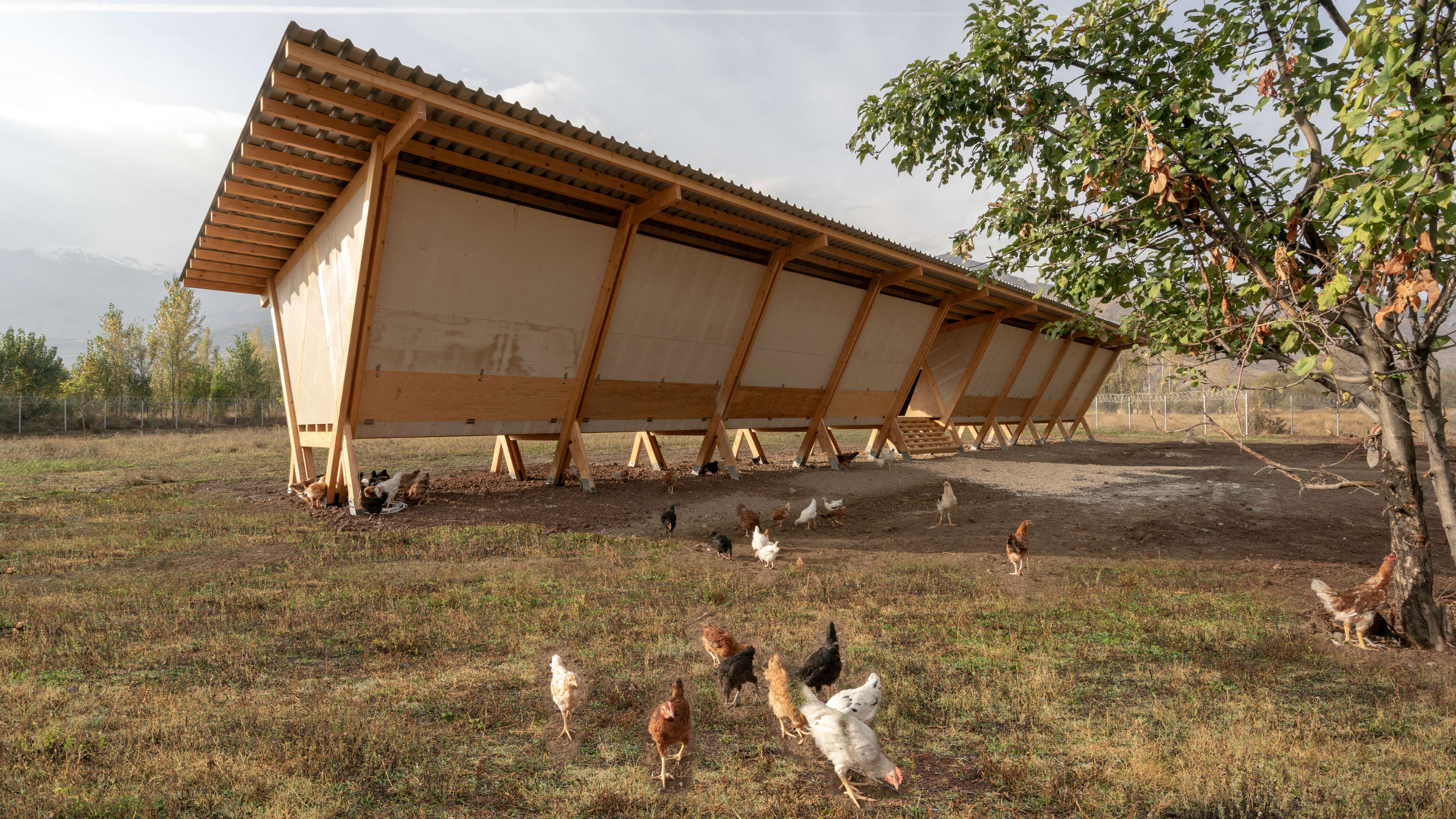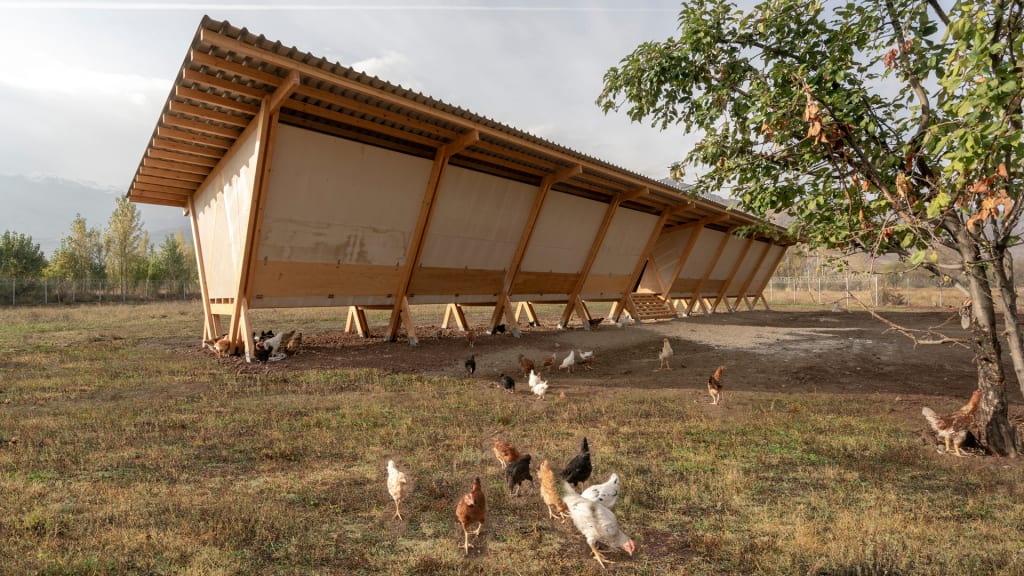Designed by the Istanbul-based architecture firm SO?, this coop was custom built at a total cost of $20,000 for an artist’s farm where it can house 800 chickens. Its materials may be humble: Oak plywood trusses support oxidized metal panels and a corrugated metal roof. Yet, the inverted A-frame building manages to look like some amalgamation of angularly ostentatious Googie architecture and low-profile traditional Japanese housing.

When I mention to the architects that this chicken coop is actually more beautiful than many regular houses I’ve seen, they stiffly correct me. “Actually the structure is not beautiful, it is super functional,” writes Sevince Bayrak, partner at SO?, over email. “If you check out the attached section diagram, there is a very functional reason for every geometrical decision.”

The roof angle maximizes the building’s shadow to keep chickens cool when they’re standing outside. The wall panels can be easily removed to expand the structure over time. Even the V-shaped frame holding it all together serves multiple purposes beyond structural support. Angling walls maximizes surface area for chickens to nest, and it creates a stadium seating arrangement that allows the chickens to poop without pooping on one another. Manure is collected into a central chamber, mixed with ash, and then heated to keep the coop warm.
It’s a lot packed into such a simple-looking structure, but that’s by necessity. “It is much easier to design for humans since humans can much more easily adapt to different conditions and scales,” writes Bayrak. “The chickens have very powerful habits. If you can’t provide the spatial conditions for their habits in an artificial environment, they simply die or stop producing eggs.”
Recognize your brand’s excellence by applying to this year’s Brands That Matter Awards before the early-rate deadline, May 3.














